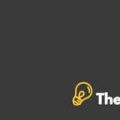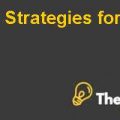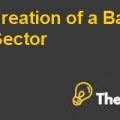
INTRODUCTION
This chapter starts with introduction, overview and move onto the research topic and related questions. The importance and purpose of this research is discussed along with a framework for the thesis.
An organization’s strategic growth and competitive advantage efforts are hindered by talent pool shortages, thus making it vulnerable to the competitors in the market place who are able to select, attract and retain from the available pool (Boshard, D. & Louw, A, 2010; Ingham, 2006).
The employee-employer relationship has seen a dramatic shift at the transitioning point from Industrial to Knowledge era. The supply and demand curve has been skewed towards the talented employees and the quest to attract and retain them has become a major challenge for almost every organization around the world.
The intangible assets like skills, dexterousness, forward thinking, ideas, creativity, reputation and relations etc. have become high value soft assets in the networked knowledge era and are the by-products of talented people.
During Alberta’s economic boom of 2004-2009, and still moving forward, thousands of interprovincial and international migrations occurred due to black gold rush. The origins of economic success can be easily traced to surge in O&G prices with WTI (West Texas Intermediate) jumping fourfold and Natural Gas showing above normal trends. This resulted in project kick-offs worth billions of dollars (Industry Canada, 2014), needing talented manpower for execution.
A presentation by Building Trades of Alberta on future of Alberta’s construction industry highlights Generation-Y as the future workforce with a notion that “Alberta has a profound notion to lead, rather than react”. It further advises that the organizations need to develop strategies in order to tackle the market trends, challenges and opportunities.
WCBC (2007) points out the integration of new thinking into traditional management practices as being the most challenging, which can either make or break the employer-employee relationship.
1.1 Overview
Talent can be described as an individual’s unique and differentiated value proposition which is utilised not only to execute day-to-day operations but also support organization’s growth plans.
The creative workforce of knowledge era i.e. Generation-Y not only value work-life balance, flexibility, fair wages, respect and openness but also access to the latest technology. This generation likes to work with same-minded people and are vocal of risks and opportunities based on organizational decisions.
In this era of skills, knowledge and creativity; organizations cannot ignore the significance of attracting and retaining employees whose talent add to its competitive and strategic advantage (Hallén, H., 2007; Mohaptra, D.). The current economy has greatly affected the supply-demand balance, dramatically resulting in cutthroat competition among organizations over the shrinking pool of talented resources. The organizations never had to focus so seriously in finding, attracting, managing, nurturing, growing and retaining talent ever before (Cheese et. al., 2007; Deloitte LLP, 2010).
An organization’s package of differentiated economic, functional, social and psychological benefits developed for the purpose of attractiveness and retainment is regarded as employer’s brand by Ambler & Barrow (1996) and Donath (2001). Rosethorn (2009) and Willock (2005) further highlights that in the current markets a strong and distinct employer’s brand acts as an enticing factor.
This report focuses on unique employer value proposition, branding and tools adopted for retaining and developing the Talent. Further, the success of these manoeuvres has been evaluated through survey and interviews. The linkage between proven basic theories and empirical findings has been established for the validity of the results.
1.2 Boom in Alberta’s Oil & Gas Sector
The fortunes of the oil industry have its reins in the hands of few important commodities like petroleum and natural gas which occur in different states in different geological formations.
‘Alberta is Canada’s energy province. The province’s diverse resource portfolio includes natural gas, conventional oil, coal, minerals and the famous Alberta oil sands. The energy industry provides tremendous opportunities for organizations involved in the extraction and processing of Alberta’s energy resources as well as for supporting organizations involved in business management, engineering, consulting, information technology and communications, and manufacturing’ (Alberta Canada, 2014).
The laws of economics are applicable to Alberta as well and so after 2003 when parts of oil sands became economically and commercially feasible for Albertans to extract, the 175 Billion Barrels boom started to grip this energy province. Canada jumped to third place in the World for proven and recoverable oil reserves, right below Saudi Arabia. In 2009, Canada’s oil production reached 6th in the world with Alberta contributing the most i.e. 68.8% (Alberta Energy, 2014)...................
This is just a sample partial case solution. Please place the order on the website to order your own originally done case solution.













